13 Web Developer Apps That Will Boost UX Productivity
Do you need help to stay up to date with the newest omnichannel UX trends? With over 70% of Gen Z users demanding websites to know what they are looking for intuitively, hyper-personalized web design has become a priority for many brands.
How do smaller companies and one-person design teams keep up with their biggest brand competitors while putting effort into multiple channels?
The key here is to embrace the newest technology on the market. As we welcome automated design tools, AI-powered analytics, and adaptable templates, more online SMEs are using fast, effective UX strategies than ever before.
With this in mind, we collated some of the best web developer apps and tools on the market in a list that promises to improve your UX productivity in 2024.
Table of Contents
The Benefits of Automating Your UX Design
Several benefits are associated with automating part or all of your UX design strategy. You have more time to focus on marketing campaigns, content design, and customer service, and you’re readily prepared to adapt your web design according to ever-changing digital trends.
Here are just some of the areas of UX design you could improve with AI-powered automation:
AI-driven Personalisation
Personalisation remains a crucial factor within a brand’s UX design strategy. 62% of customers no longer want personalised browsing experiences but expect them.
With the help of AI-powered tools like Framer and UIzard, web developers can create and scale content tailored to a user’s preference. With the ability to track historical consumer interactions with a brand, these clever AI tools help designers automatically adapt their experiences based on the data input of each person browsing.
Take Amazon, for example; when each user logs on, the site design shifts to present the best product recommendations for their tastes. This creates a unique and personalised experience for every user to enjoy.
Michelle Bacharach, the CEO and co-founder of AI-powered dynamic content creator FindMine, explains that brands that tap into personalisation trends can expect future success in meeting consumer needs.

“Customers have high expectations for their favourite brands, and online marketplaces have never been more important,” says Michelle Bacharach, CEO of the AI-powered content creator tool FindMine. “Brands that can predict the desires of their online customers and push relevant and inspirational content to them based on those desires will see huge success in the coming years. Those who don’t will fall behind.”
Optimised Behaviour Analysis
There are several AI-powered analytic tools on the market. These are brilliant for all aspects of branding, helping businesses get quick insights into user behaviour and their engagement with certain products on the site.
For UX designers, behaviour analytics is a lifesaver. With the ability to pinpoint where users bounce or struggle to navigate the site, designers can use that information to tweak their navigation flow or change the landing page's layout.
Rather than manually tracking user behaviour through online forms and A/B testing, automated analytic platforms such as Heap and Mouseflow can test large groups of users at once for the most accurate highlighting of pain points.
Design Adaptability
Accessible UX design has never been more critical. It’s estimated that 1 in 4 people are disabled, meaning your online experience must be tailored to a diverse range of users.
AI-powered web development platforms allow designers to customise text size and colours to help accommodate those with unique needs like colour blindness, visual impairment, or cognitive disabilities.
Using a range of AI algorithms, these automated UX tools help designers create a website that can adapt to each user’s needs and devices for a seamless browsing experience.
Take RNID, for instance. The Hearing Loss Charity is an excellent example of a UX design considering accessibility.

With their automated text-scaling feature, each user can scale the text on the page up to 300% without changing the design format. Better still, in support of their hearing and sight loss visitors, their UX design is screen-reader-friendly.
RNID, a hearing loss charity, is the perfect example of a website that understands the intricacies of text-scaling functionality.
A visitor can scale any text up to 300 per cent without the words falling off the page. And true to their commitment to supporting those with hearing loss, the site is simple and screen-reader-friendly.
Accelerating UX Development
Using AI-powered UX tools, you can also speed up the development process. Using AI, you can easily create template colour schemes, generate SEO-friendly layouts, and optimise your UX design for smartphone and desktop devices with just a button. This can save UX designers time on tedious tasks and provide time to concentrate on user research and testing.
With so many tools to choose from, there are plenty of design elements that you can automate when it comes to creating a powerful website. With this in mind, we’ve ranked a few of our favourite UX integrations and platforms for automating your UX design in 2024.
Let’s look at the tools every UX designer should have when automating their planning, development and testing.
13 Web Developer Apps To Try Out
As an increasingly online world demands more and more from web developers, automating aspects of your UX design strategy to help give every user a personalised experience is worth the hassle.
“Recent research from Zendesk shows that after just one bad experience, up to 61% of customers will take their business elsewhere,” says Alfonso de la Nuez, Lead Digital Director at User Testing. “It is therefore imperative to both deliver upon and measure the quality of your user experience to ensure customers continually receive the best version of your product. “
A robust UX design drives powerful results for your brand. Here are thirteen UX design tools that could enhance your web development journey in 2024.
1 – Sketch
First up is Sketch, a brilliant vector graphics editor for designers who want to upgrade their wireframing and prototyping easily.

This flexible UX and UI app is a great platform to use collaboratively and can be accessed by beginners and advanced UX professionals. With an infinite design canvas and a range of cross-platform tools built for real-time collaboration, this is the perfect partner for optimising your UX output with a remote team.
Sketch has a tremendous take-it-or-leave-it 30-day free trial; after that period ends, the platform costs $9 monthly, making it a well-priced tool for teams on a budget.
2 – Looppanel
Next up is Looppanel. This research analysis tool is brilliant for automating and indexing information from your user interviews, generating highlighted transcripts, and organising all findings into segmented pain point groups in minutes.
This UX research repository is necessary if you find organising your user interview data tedious. Using an automatic AI-powered analysis feature, Looppannel can segment data based on specific tags, questions, or sentiments before compiling an easy-to-read report for designers taking the feedback on board.

Starting from as little as $30 per month, this tool is brilliant to scale from a small to a large team, depending on your needs.
3 – Adobe XD
Most UX designers will have heard of Adobe XD. This vector UI tool has different features to enhance adaptable user experiences in 2024.
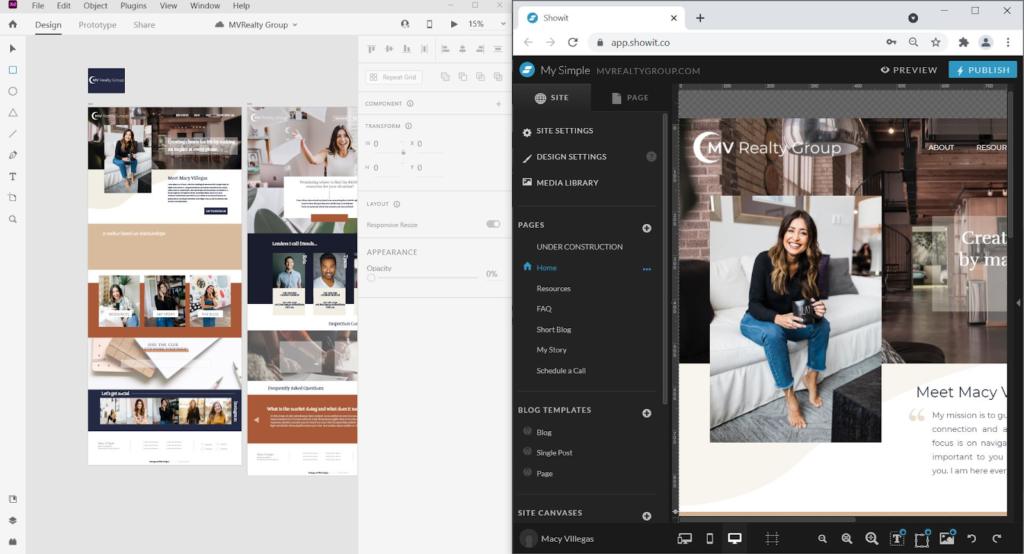
From ideation to impressive animation, Adobe XD is most commonly used by UX designers of all levels and is known for being quick to pick up, thanks to its drag-and-drop editor feature.
This platform is perfect for testing your designs and experimenting with different template styles and colours. Better still, Adobe is a brilliant tool when scaling and editing your designs, as each component of your change is translated across all designs and documents, sparing you the time of manually duplicating each alteration across numerous versions of the design.
Adobe XD is free to use in its most basic form; however, for full functionality, prices start at $9.99 monthly and $52 monthly for the entire creative cloud package.
4 – User Interviews
If you’re looking to improve the efficiency of your UX research, User Interviews are a great tool to consider.
Instead of searching for participants to take part in focus group research and A/B testing, User Interviews can automate participant recruitment.

Connecting interviewees with researchers, the tool filters through a list of potential candidates using an AI algorithm that tracks both parties' ages, locations, and industries to help find possible matches.
The platform also offers automated screening, interview scheduling, and incentives based on the participant's demands. This saves UX designers from organising their research interviews and seamlessly integrates a meeting into their calendars.
Offering a free plan for researchers looking for less than 100 participants, this is a very accessible tool for businesses of all shapes and sizes.
5 – Hostinger
Next, we have Hostinger’s web designing tool, which is aimed at beginner UX designers. With the ability to choose from 150 pre-made optimised templates, this is a tremendously productive platform for brands that want to go live quickly.
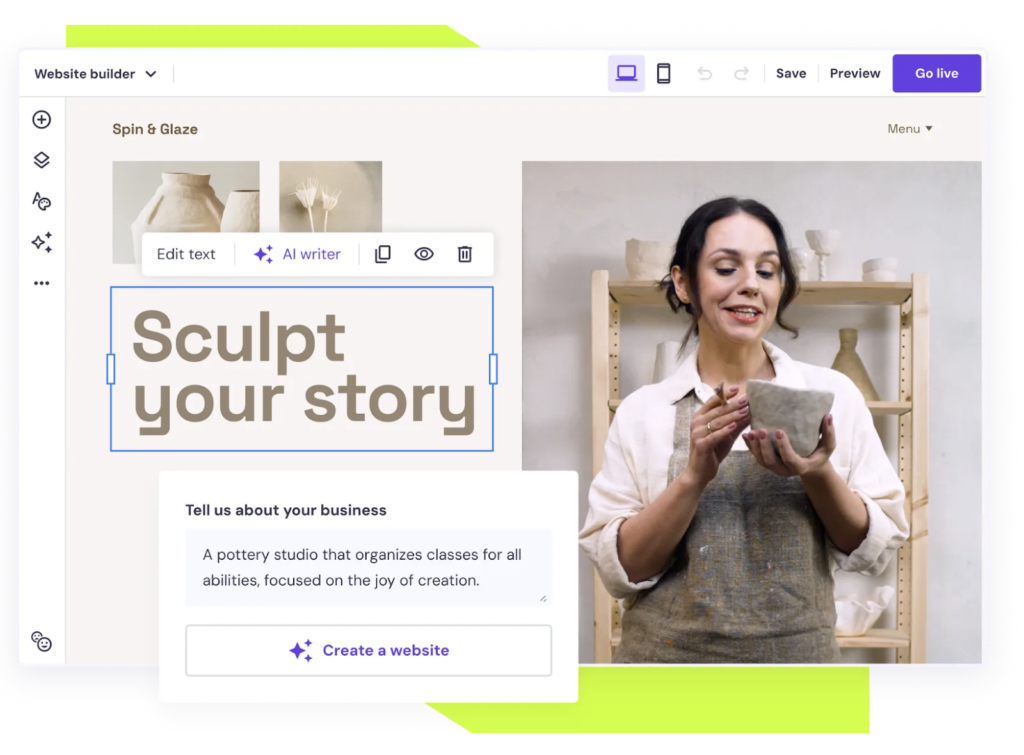
Thanks to its drag-and-drop nature and AI image and logo generators, this tool is for creatives who have a vision and want to bring it to life without the hassle of starting from scratch.
6 – UXPin
Next up is UXPin. This is one of the most seasoned UX tools on the market and has been used by UX experts and novices for years.
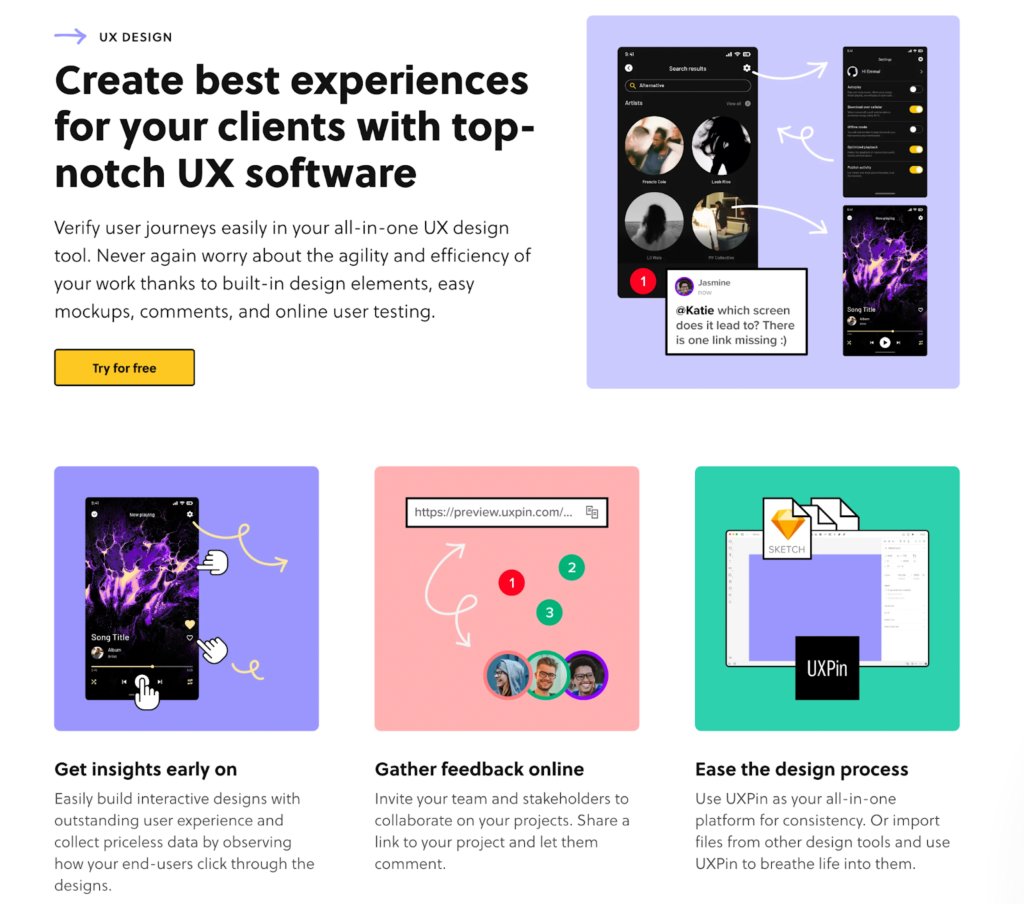
With no coding skills required to use the platform, UXPin has an interface that is easy to navigate. This platform has a wide range of ready-to-use templates and built-in libraries for IOS, Bootstrap, and UserFlows packed with interactive elements for UX designers looking to pick up the pace.
UXPin is also a go-to tool for checking your accessibility features. With a built-in simulator that tests colour contrasts, UXPin allows you to see your site through the eyes of someone colour-blind so that you can adjust your design accordingly.
You can try out UXPin for free for two months if you’re happy to use their limited version. For full access, prices start at $19-$69 per month, depending on your required features.
7 – Miro
Next up, let’s talk about Miro. Miro is a whiteboard tool. For UX designers struggling to plan their strategy, this is the perfect productivity platform for wireframing, brainstorming, and consolidating user research data.
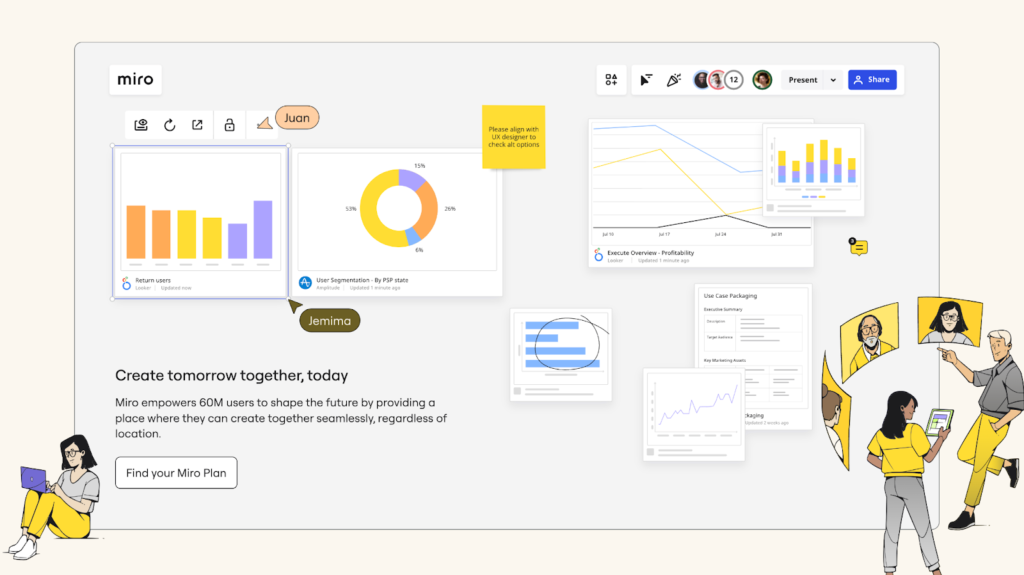
Working like a traditional whiteboard, you can add sticky notes and other collaborative widgets to the screen for mass-remote collaboration.
This platform allows each team member to view the other's cursers and share their screens on calls with a built-in video chat function.
You can use a public Miro board for free, but prices start at $8 per month to enjoy private brainstorming sessions.
8 – UXCam
Next up, we have UXCam. This web development tool specialises in helping UX designers build interactive mobile web and app experiences.
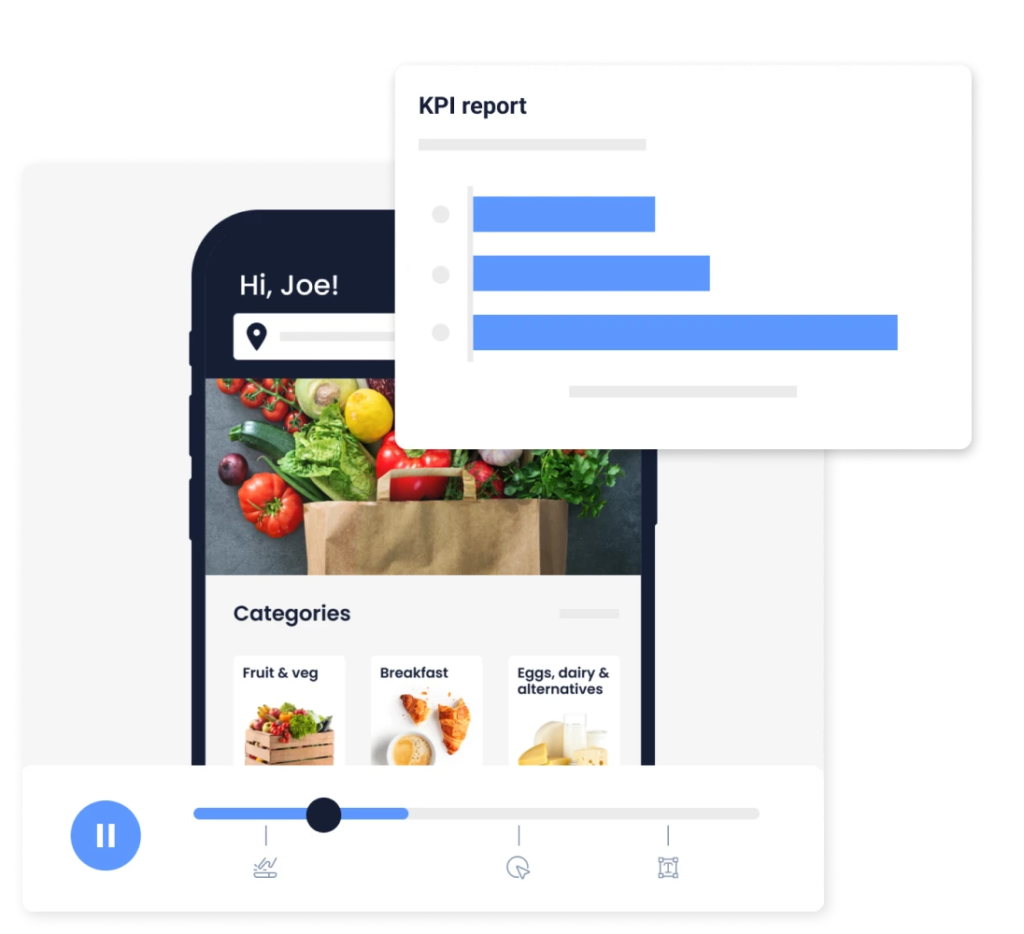
As more of us swap the desktop for our smartphones when we search, this tool is essential to add to your belt if you want to speed up your multi-device design.
With a significant focus on app-based UX, UXCam can also map in-app performance with several analytic features.
Some of these include capturing each micro-interaction between consumers using the current version of your UX design, the ability to record and share sessions amongst your whole team, and leveraging a comprehensive set of contextual data that can help design teams learn more about when and why a consumer drops off.
UXCam can also be integrated with platforms like IOS, Google Analytics, MixPanel, and Segment.
UXCam works on a custom pricing basis and offers each new subscriber a 14-day free trial.
9 – Marvel
Marvel specialises in rapid prototyping. This clever UX productivity tool reduces the time it takes to wireframe, connect integrations, and generate all your design specs.
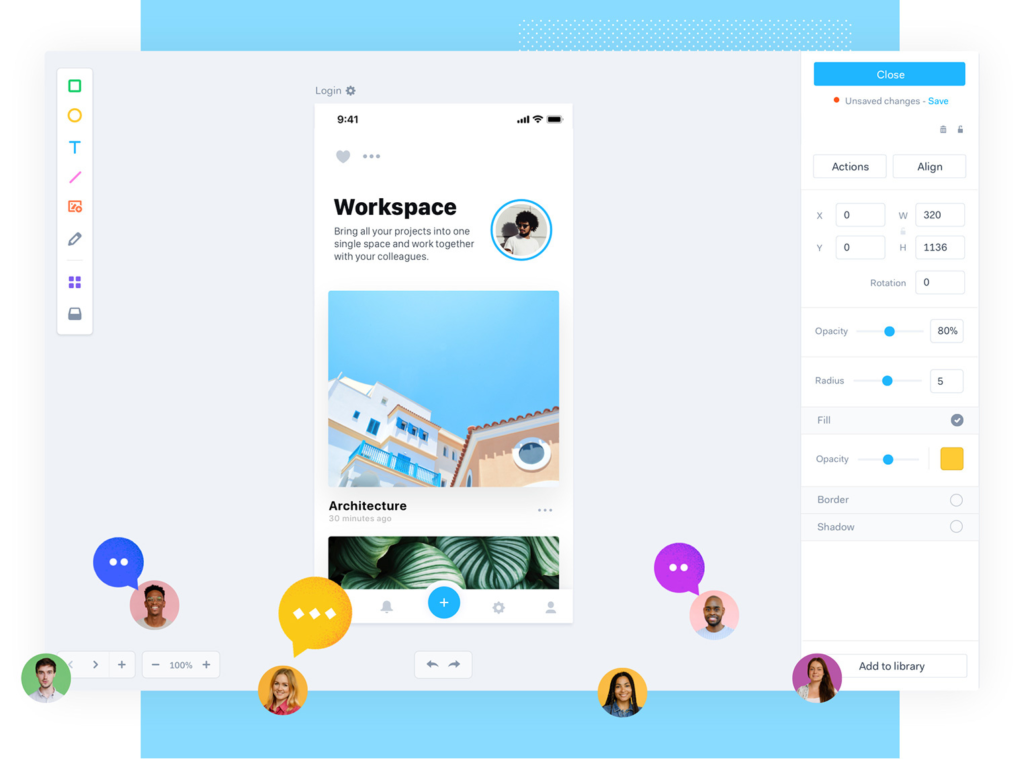
With the ability to create low-fidelity and high-fidelity designs at the click of a button, Marvel is voted one of the best tools by product designers and UX experts.
One clever feature we love is that you can draw up your wireframes and app screens on paper using the Marvel platform before taking a photo and uploading it straight to the tool as a digital sketch. Better still, Marvel also allows you to draw directly on the screen.
With a UI kit library full to the brim with clever design tools, there’s no doubt that Marvel enhances your responsive design.
It can be integrated with Dropbox Paper, Confluence, Jira, Sketch, and Microsoft.
The most basic version of Marvel is free, but the pro packages start at just $8 for a complete set of features.
10 – Wondershare Mockitt
Next up, we have Wondershare Mockitt. This tool is an all-in-one sensation for UX designers looking to boost their productivity.
The ability to facilitate all online design work, design collaboration, and prototyping aims to help UX teams create products faster and easily replicate their designs across several channels.

This tool is incredibly gifted in creating interactive prototypes that can be animated to help showcase UX ideas. You can create numerous artboards at once, and with their collaborative feature, you can enjoy real-time reactions to your work.
Some other features included on Wondershare Mockitt’s UX platform are formatted animations, a library of over one hundred customisable templates, a widget library, prototype-sharing functions, and easy-to-use drag-and-drop elements.
Wondershare Mockitt can also integrate extensions from Google Drive, Dropbox, Microsoft Teams, Slack, Box, and Asana.
Wondershare Mockitt is accessible for beginners, but if you’re looking for a full suite of features, the professional platform starts at only $8 monthly.
11 – User Testing
User Testing is a great platform to use once you’ve completed the first draft of your UX design. Rather than a building platform, User Testing is a testing platform perfect for trailing out your designs on candidates that match your target audience.
Not only does User Testing help you source the candidates for UX testing, but it quickly delivers real-time feedback and helps highlight potential pain points that could impact how you move forward with your design.
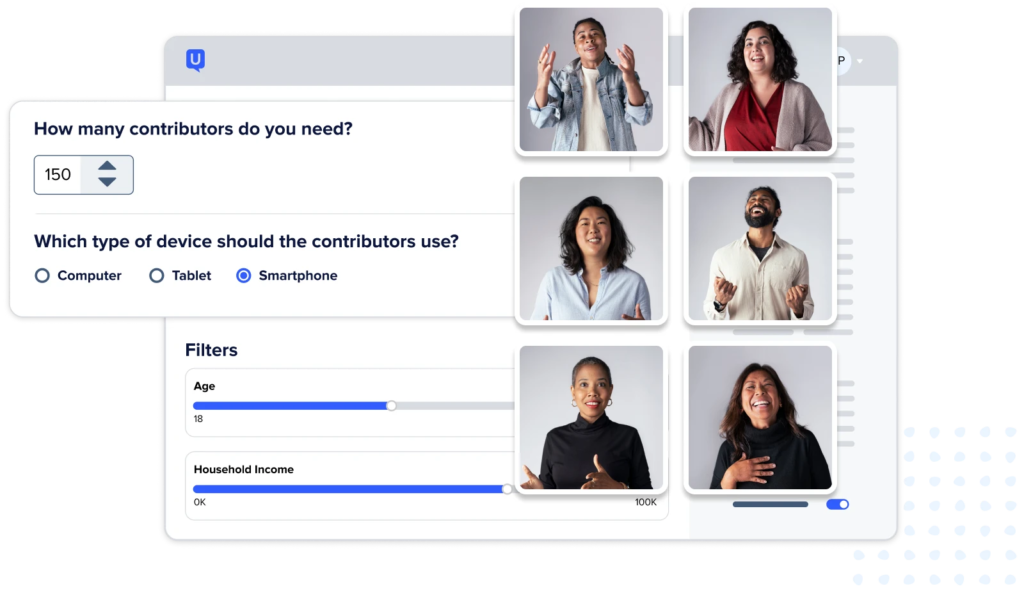
Better still, User Testing is a remote candidate trailing platform, meaning that you can test your designs on diverse demographics from all over the globe for the most accurate outcome. This helps improve feedback accuracy and could help you discover new positives and negatives related to your design that may need to be picked up in a local testing sample.
User Testing has several diverse demographics to pick from. You can choose candidates based on age, location, occupation, etc. However, if you’re unsure what sample to choose, user testing also has a feature that matches your design to the best sample group.
User Testing starts at $34 per candidate and can be scaled depending on your sample testing group's size.
12 – Overflow
Overflow specialises in optimising user flows. As a brilliant integration for Sketch, Adobe XD, and Figma, this clever tool can monitor the flow of your content design, add device skins, and even rearrange your flow and prototypes for the best reception.
Overflow is most famous for its device skins, which allow you to wrap any artboard in just one click.
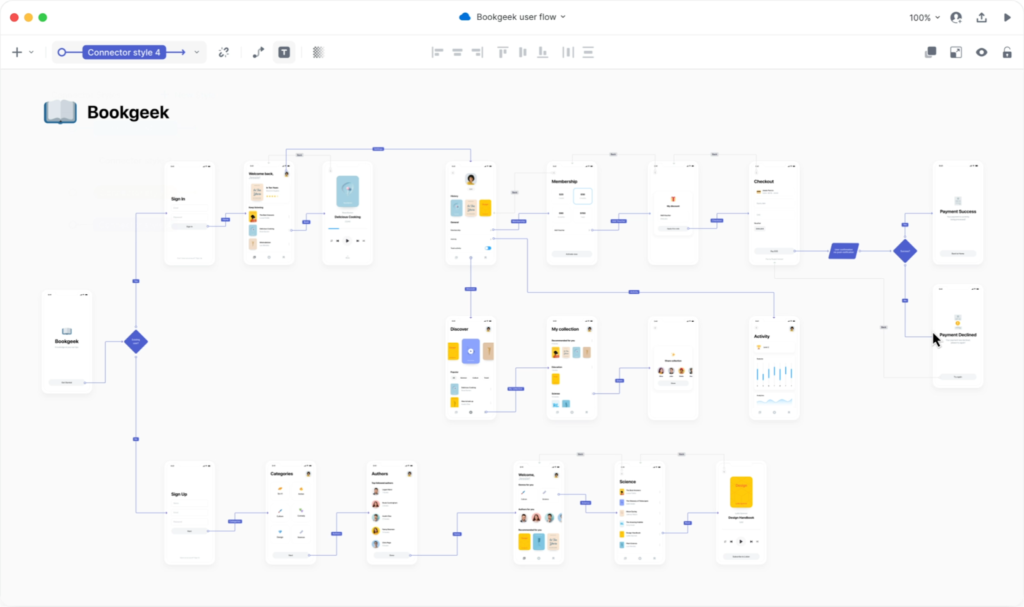
Better still, using Overflow, you can create self-guided presentations surrounding your prototypes, allowing collaborators and potential stakeholders to review your work at their convenience.
Overflow does offer a 14-day free trial, but after that, the subscription starts at $14.95 per month for a complete set of features.
13 – Gliffy
Last but not least, we have Gliffy. Gliffy is a tool UX designers use to speed up the creation of flowcharts, wireframes, and any other flow-related diagram.
Gliffy has some brilliant collaboration features. It offers several brainstorming templates that can be shared across the team and accessed online and offline from any browser. With a selection of mind maps, starbursting features and 5 Whys flows, there are plenty of options for the perfect design planning session.

You can also export and share your diagrams from Gliffy. With the ability to export any diagram in popular file formats, your work is easy to share via email and embed onto documents and within presentations.
This is the perfect tool for UX designers beginning the planning stage of their design journey and can help teams notice potential flow faults before the building process starts.
Gliffy starts at just $8 per month per user for 1-9 users. However, with 6-10 users, that price drops to $6 per user per month.
Could AI Enhance Your Future Designs
The UX design scene is becoming more demanding. To successfully update your websites regularly with little to no stress, AI-powered automated tools are essential to integrate into your strategy.
“When used responsibly, AI can be a powerful partner. It can streamline repetitive and draining tasks while allowing humans to excel in areas that provide unique value, such as imagination, creative direction, and human connection. If nothing else, people will always be needed to edit and curate the output of AI systems for their target users and audiences.”
Adrienne Downing, Senior UX Researcher
For those looking to enhance their future UI functions, transform their user research, and engage in productive planning, embracing AI-powered web development ads is a must if you want to stay ahead of your competitors.
The question is, what tool will you turn to first?
